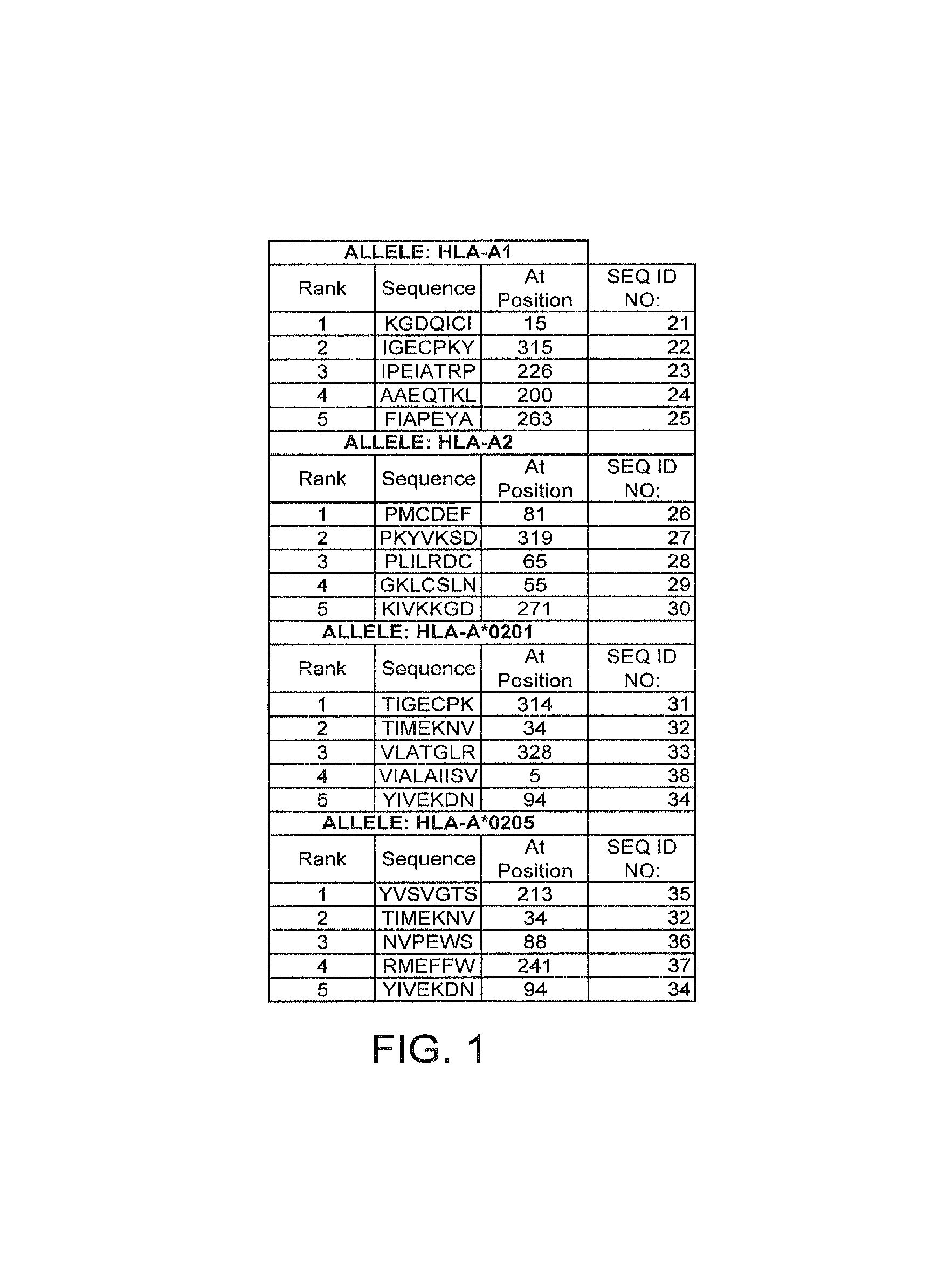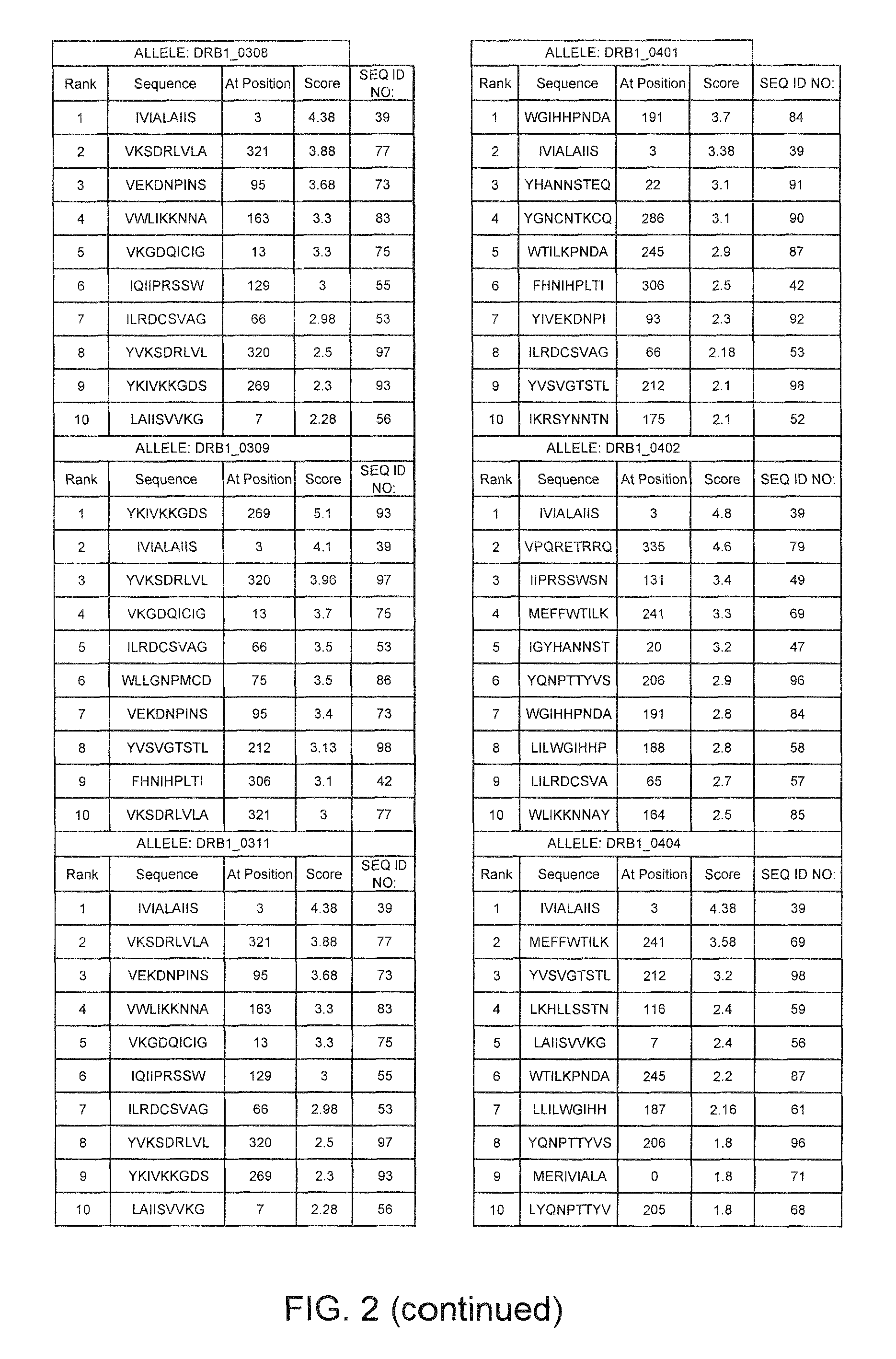DNA sequences, vectors and proteins of avian influenza hemagglutinin
a technology of avian influenza and vectors, applied in the field of dna sequences, vectors and proteins of avian influenza hemagglutinin, can solve the problems of influenza pandemic, high illness and death rate, and still consider the threat of avian influenza an important public health threat, and achieve broad heterologous disease protection and broad spectrum of activity.
- Summary
- Abstract
- Description
- Claims
- Application Information
AI Technical Summary
Benefits of technology
Problems solved by technology
Method used
Image
Examples
example 1
Vector Constructions
[0156]Throughout these examples, the following designations may be used to refer to the sequences identified as SEQ ID NOs: 1, 3, 5, 7, 9, 11 or 13:
[0157]SEQUENCE ID NO: 1: HA5TW68 v3: Avian Influenza virus (AIV) Hemagglutinin (HA) H5 Turkey / Wisconsin / 68; no cleavage site; plant codon optimized; SEQUENCE ID NO: 3: HA5TW68 v4: Avian Influenza virus (AIV) HA H5 Turkey / Wisconsin / 68; no cleavage site with serine 239 changed to asparagine; plant codon optimized; SEQUENCE ID NO: 5: HA5TW68 v5: Avian Influenza virus (AIV) HA H5 Turkey / Wisconsin / 68 native sequence; plant codon optimized including protease cleavage site;
[0158]SEQUENCE ID NO: 7: HA5AH v1: Avian Influenza virus (AIV) HA H5 902755 ancestral consensus hybrid with amino acid modifications at positions 99, 102 and 170; no cleavage site plant codon optimized; SEQUENCE ID NO: 9: HA5AH v2: Avian Influenza virus (AIV) HA H5 902755 ancestral consensus hybrid with amino acid modifications at positions 99, 102 and 239...
example 2
Expression in NT1 Cell Lines
[0190]Since the synthetic genes were proven expressible by plants, the constructs were used in stable transformation of NT1 cell lines. The plant cell line NT1 is derived from Nicotiana tobaccum cells that have reduced alkaloid content and no capacity to regenerate into plants. The plant cell cultures were transformed as described in Cardineau, Guy A.; Mason, Hugh Stanley; Van Eck, Joyce M.; Kirk, Dwayne D.; Walmsley, Amanda Maree. Vectors and cells for preparing immunoprotective compositions, such as Newcastle disease virus HN antigen, from transgenic plants. WO2004098533 (which is hereby incorporated by reference in its entirety) and HA expression determined through the HA-specific ELISA described previously. Table 4 and FIG. 5 illustrate the amounts of HA expressed in the various cell lines.
[0191]
TABLE 4Stable expression of AIV HA in NT1 plant cell cultures.The first two digits of the line number indicate the plasmidconstruct (pDAB44xx)Plant Cell Cultu...
example 3
Petunia Plant Transformation and HA Expression
[0192]Petunia was transformed using the following protocol. 48 hour cultures of A. rhizogenes containing the constructs were prepared at 1:5 dilutions in ½ YMB and ½ Murashige and Skoog's basal medium with vitamins (MS media). Diluted cultures were incubated for a further 2 hours at 25° C. Petunia leaf discs were surface sterilised with 0.4% sodium hypochlorite prior to immersion in the A. rhizogenes cultures. The infected discs were placed on MS agar plates for 48 hours before being transferred to selection plates. MS agar plates contained MS media, 3% (w / v) sucrose, 1 mgL−1 6-benzylamino-purine (BAP), 1 mgL−1 indole-3-acetic acid (IAA), and 0.8% (w / v) agar. Selection plates contained MS media, 3% (w / v) sucrose, 0.8% (w / v) agar and 5 mg / L glufosinate. Newly formed hairy roots, along with a small portion of parent tissue, were transferred to liquid selection MS media containing 500 μgml−1 cefotaxime and 5 mg / L glufosinate. After 10 to 14...
PUM
| Property | Measurement | Unit |
|---|---|---|
| OD | aaaaa | aaaaa |
| melting temperature | aaaaa | aaaaa |
| Tm | aaaaa | aaaaa |
Abstract
Description
Claims
Application Information
 Login to View More
Login to View More - R&D Engineer
- R&D Manager
- IP Professional
- Industry Leading Data Capabilities
- Powerful AI technology
- Patent DNA Extraction
Browse by: Latest US Patents, China's latest patents, Technical Efficacy Thesaurus, Application Domain, Technology Topic, Popular Technical Reports.
© 2024 PatSnap. All rights reserved.Legal|Privacy policy|Modern Slavery Act Transparency Statement|Sitemap|About US| Contact US: help@patsnap.com










